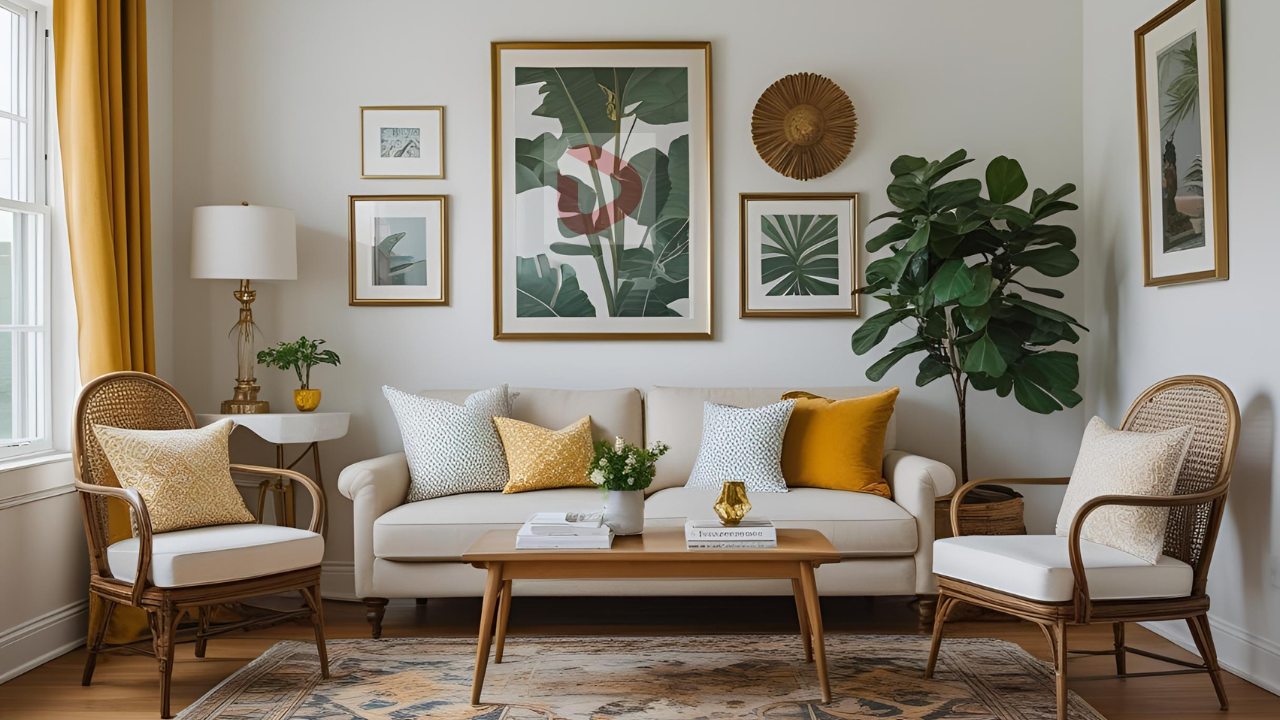Designing a beautiful and functional home isn’t just about picking stylish furniture or trendy paint colors. Behind every stunning space lies a thoughtful framework built on timeless interior design principles. Whether you’re remodeling your living room, setting up a new apartment, or simply rearranging a space, understanding these seven core principles of interior design can help you achieve harmony, comfort, and style in your home.
Let’s explore each principle and how you can apply them in your own space.
1. Balance: Creating Visual Stability
Balance is all about making a space feel even and well-distributed. There are three types of balance in interior design:
- Symmetrical balance (formal): Both sides of the space mirror each other—common in traditional design.
- Asymmetrical balance (informal): Achieved with varied elements of equal visual weight, adding interest and energy.
- Radial balance: Elements radiate around a central point (think round dining tables or spiral staircases).
In American homes, especially open-concept layouts, maintaining balance ensures each area flows smoothly and feels cohesive.
2. Harmony and Unity: Making Everything Work Together
Harmony brings all the elements—colors, textures, furniture, lighting—into a consistent look and feel. Unity ensures everything in the space feels like it belongs together.
For example, using a consistent color palette or repeating patterns across different rooms creates a seamless, inviting environment. In modern U.S. homes, this is key to making open spaces feel intentionally designed rather than chaotic.
3. Rhythm: Guiding the Eye Through Repetition
Rhythm in interior design works like rhythm in music—it guides movement and sets a tone. This is done by repeating colors, shapes, patterns, or textures to create flow.
For instance, a series of black-framed pictures, similar wood finishes, or recurring fabric patterns throughout your space can subtly direct the eye and make a room feel dynamic yet cohesive.
4. Emphasis: Creating a Focal Point
Every well-designed room needs a focal point—something that draws attention and anchors the design. This could be a fireplace, an oversized artwork, a bold accent wall, or a statement piece of furniture.
In U.S. homes, the living room TV wall, a stunning kitchen island, or even a large window with a view often serve this purpose. Whatever it is, build the rest of the design around this highlight.
5. Scale and Proportion: Sizing Everything Just Right
Scale refers to the size of objects in a space, while proportion is about how those sizes relate to each other.
A giant sectional in a small apartment? Overwhelming. Tiny art on a huge wall? Underwhelming.
Understanding how pieces relate to each other—and the room itself—is critical for a comfortable, well-balanced environment.
6. Contrast: Adding Visual Interest
Contrast brings drama and dimension to a space. It can be created through:
- Color: Black and white, dark and light.
- Texture: Smooth and rough surfaces.
- Shape: Round and angular.
In American interiors, high-contrast kitchens (white cabinetry with dark countertops, for example) and bold accent walls are common ways to add this visual spark.
7. Details: The Finishing Touches
Last but never least, the details are what complete a room. From throw pillows and lighting fixtures to hardware and trim, these small elements add polish and personality.
Don’t underestimate the power of these finishing touches. They bring your unique style to life and can easily modernize or refresh a space without major renovations.
Final Thoughts
Whether you’re decorating a studio apartment in New York or a ranch-style home in Texas, these seven principles of interior design apply universally. By understanding and applying balance, harmony, rhythm, emphasis, scale, contrast, and detail, you can transform any space into one that feels both stylish and livable.
Interior design isn’t about following rigid rules—it’s about creating spaces that feel good to be in. And with these principles as your guide, you’re already on the right path.

